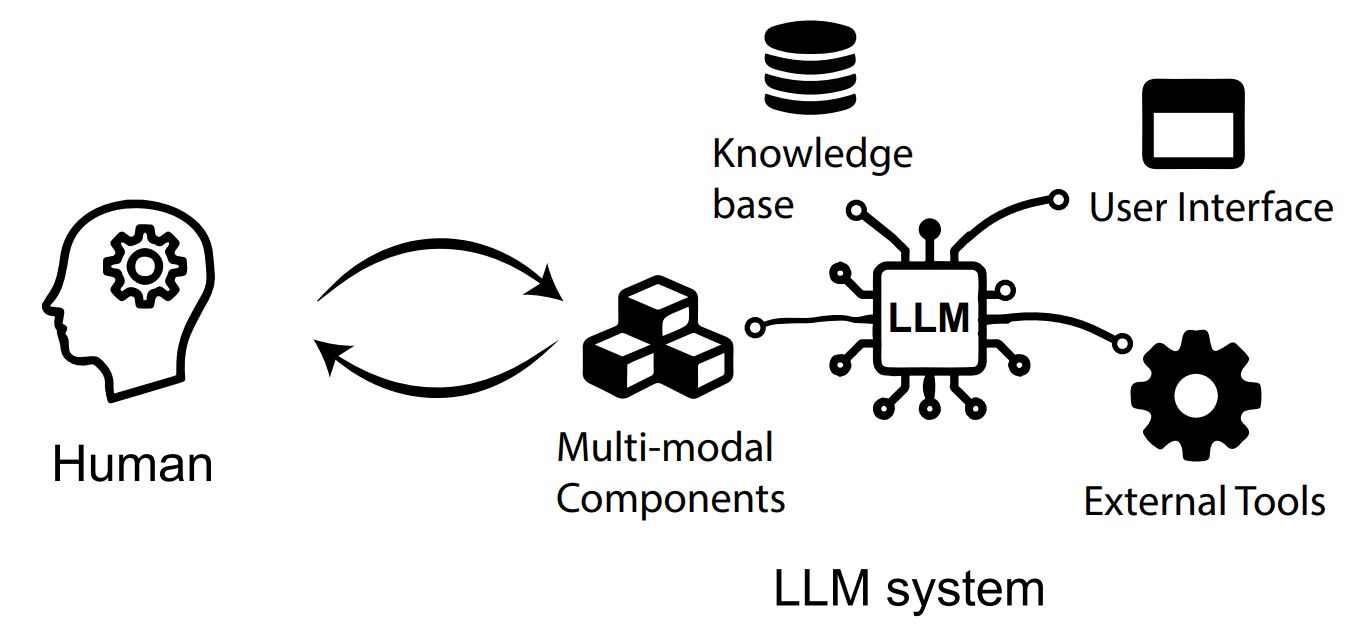What is Human-LLM Interaction Mode?
As people increasingly use LLMs to accomplish a wide range of tasks, researchers in AI and HCI have developed tools to support these human-LLM interactions. For instance, designing customized prompts, uploading knowledge, and integrating these into OpenAI’s GPTs interface exemplifies the creation of a simple yet tailored LLM-powered system. In this case, while OpenAI’s model remains the core component—processing text inputs and generating responses—the system achieves enhanced functionality beyond its default capabilities. Similarly, various systems have been developed to expand human-LLM interactions, enabling more complex tasks than those typically associated with basic LLM usage.
As such, we define an LLM system the following:
Definition: LLM System
Definition 2: In this paper, We define an LLM system as a collection of components comprising the LLM itself and the elements through which users interact with LLM.
Figure: Human-LLM Interaction. This diagram illustrates the basic concept of human interaction with LLMs through various elements, which we refer to as "actors". The LLM serves as the central component of the system, incorporating several actors such as knowledge bases, user interfaces, multi-modal components, and external tools.
We illustrate LLM system in Figure. In particular, more advanced systems might help users design prompts, upload existing knowledge, or modify outputs. In particular, we refer to the processes by which humans engage with LLM systems as interaction modes.
Definition: Interaction Modes
Definition 3: In this paper, We define an Interaction Modes as the types of processes through which humans collaborate with LLM systems to accomplish tasks and achieve their goals.
-
Note 1: Interaction modes often introduce a new actor beyond the human and LLM, such as knowledges, tools, models and additional computational capabilities, into the human-LLM team. Through interaction modes, Human can interact with LLM system, which has additional capabilities to perform tasks than LLM itself. Consequently, standard text-based interaction (simply conversationallynteracting with LLM) does not typically qualify as an interaction mode.
-
Note 2: Specifically, we treat prompting techniques as a unique interaction mode where multiple prompting strategies are employed without the involvement of additional actors.
